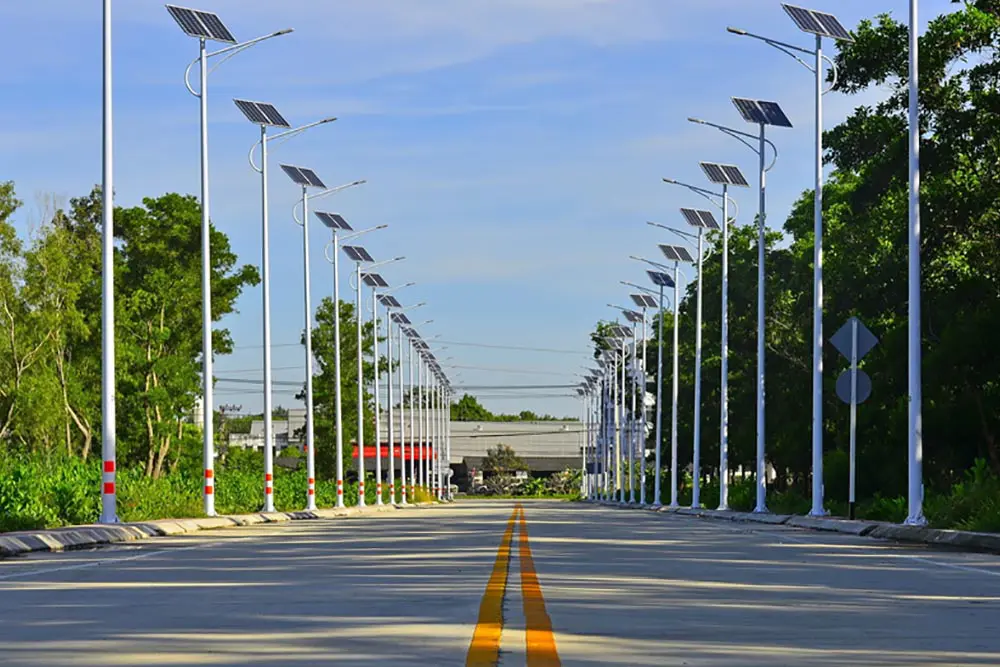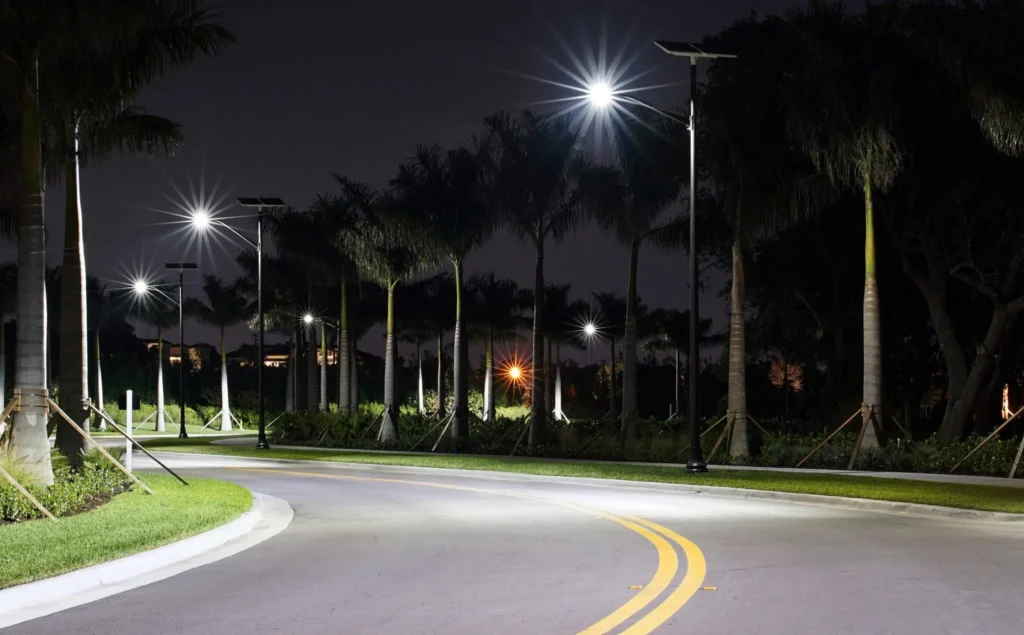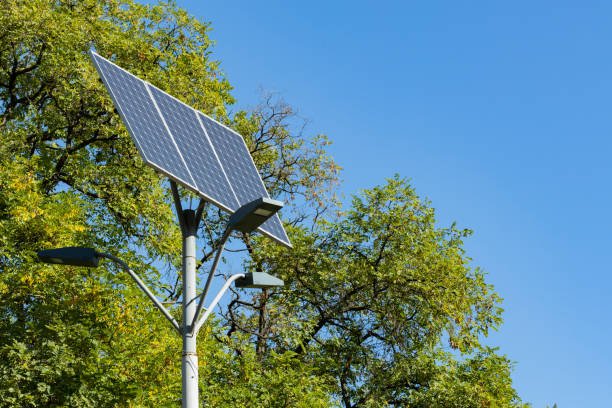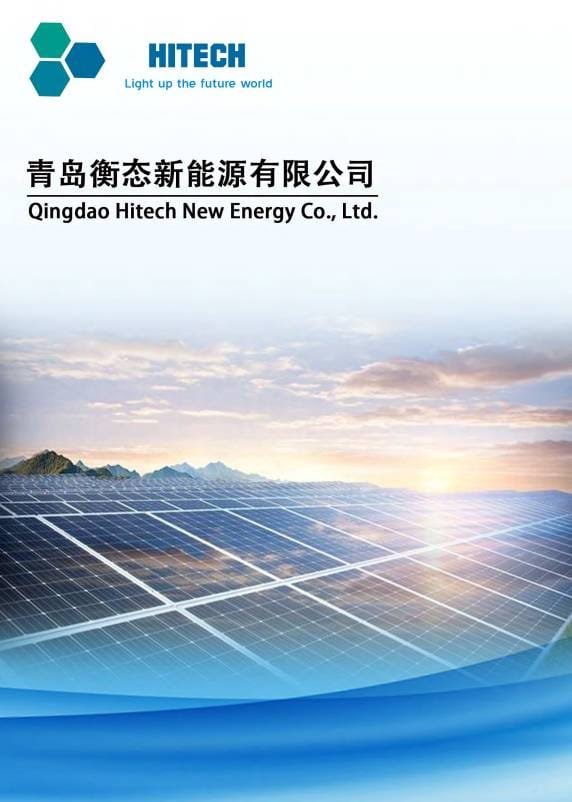Have you ever wondered how long solar street lights actually last? Understanding this is key to making an informed decision when choosing a solar lighting solution. In this post, we’ll explore the factors that determine how many hours a solar street light can operate on a single charge.
The duration a solar street light lasts depends on the battery capacity, the efficiency of the solar panel, local weather conditions, and the LED light's power. Generally, these lights run between 8 to 12 hours a night, but different factors can affect this time.
Let’s dive deeper into the factors that determine how long your solar street light will shine at night.
1. Battery Capacity: The Key to Longevity
The battery is the heart of any solar street light, storing the energy captured by the solar panel during the day. The size and capacity of the battery play a huge role in how long the light can last at night.
- Typical Duration: A standard solar street light with a fully charged battery will typically last 8 to 12 hours during the night.
- Extended Duration: Some advanced systems, with larger batteries or energy-efficient features, can last up to 15 hours on a single charge.
Tip: If you live in an area where the nights are longer, or you need more extended lighting, consider a solar street light with a larger capacity battery.

2. Solar Panel Efficiency
The efficiency of the solar panel determines how much energy it can store during the day. A more efficient solar panel will absorb more sunlight, which directly translates to a fully charged battery and a longer-lasting light at night.
- Better Panels, Better Performance: High-quality, high-efficiency solar panels can gather more sunlight in less time, ensuring that your solar street light stays fully powered even on shorter, cloudy days.
- Solar Panel Size: Larger solar panels also capture more energy, providing extra reliability, especially during winter months or in areas with less sunlight.
Tip: When choosing a solar street light, make sure the solar panel is powerful enough for your region’s sunlight hours to ensure it gets fully charged every day.
3. Weather Conditions
Weather plays a big role in how long a solar street light can last. If you live in an area with consistent sunshine, your light should last its full expected duration. But in regions with frequent rain or overcast skies, the solar panel may not collect enough energy, leading to a shorter operational time.
- Cloudy or Rainy Days: During cloudy or rainy periods, solar panels will receive less sunlight, which could reduce the number of hours the street light can stay on.
- Optimal Conditions: In regions with plenty of sunshine, the light can perform optimally, lasting the full 8–12 hours.
Tip: Consider seasonal weather conditions and choose solar street lights with larger batteries to compensate for lower sunlight in winter or rainy months.

4. LED Light Power
LED lights are commonly used in solar street lighting systems because they are energy-efficient and long-lasting. However, the power and brightness of the LED light directly impact how long it will run. Higher-brightness LEDs consume more energy, so the battery will drain faster.
- Standard LEDs: Standard LED lights, which provide moderate brightness, are energy-efficient and will last for 8 to 12 hours on a single charge.
- High-Brightness LEDs: For areas requiring more intense lighting, high-brightness LEDs can drain the battery faster, reducing the overall operational time.
Tip: If you don’t need extremely bright light, consider choosing a solar street light with a lower-powered LED to extend battery life.

5. Quality of Components
Not all solar street lights are created equal. The quality of components, such as the solar panel, battery, LED light, and controller, directly impacts how efficiently the system operates.
- Higher-Quality Components: Top-tier components are more reliable and energy-efficient, which means your solar street light will work longer and last through more seasons without requiring frequent maintenance.
- Affordable Options: Cheaper models may use lower-quality parts, which could lead to reduced performance and shorter operational time.
Tip: Invest in solar street lights from trusted manufacturers with high-quality components for better long-term performance.
Summary Table: Factors Affecting the Duration of Solar Street Lights
Here’s a quick reference table that summarizes the factors impacting the duration of solar street lights:
| Factor | Impact on Duration | Recommendation |
|---|---|---|
| Battery Capacity | Larger batteries generally allow lights to last 10-15 hours; standard ones last 8-12 hours. | Choose solar street lights with large-capacity batteries for extended operation. |
| Solar Panel Efficiency | More efficient panels store more energy, resulting in a longer operational time. | Invest in high-efficiency solar panels to ensure full battery charge, even with limited sunlight. |
| Weather Conditions | Cloudy or rainy weather reduces energy capture, thus decreasing the operational hours. | For regions with harsh weather, consider larger batteries or more efficient panels. |
| LED Light Power | Higher-brightness LEDs consume more energy and reduce the duration of light. | Select standard brightness LEDs for longer battery life unless high intensity is required. |
| Quality of Components | High-quality components lead to better performance and longer operational time. | Opt for high-quality systems from trusted manufacturers for reliability and longer-lasting operation. |

Conclusion
In general, solar street lights last 8 to 12 hours on a full charge under normal conditions. However, battery capacity, solar panel efficiency, local weather, and LED brightness all play significant roles in determining exactly how long the light will stay on. By choosing the right solar street light and factoring in your local climate, you can ensure reliable, long-lasting lighting for your outdoor spaces. Always opt for high-quality components to maximize both performance and lifespan.


